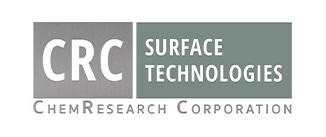
08 Sep The Role of Metal Passivation in Medical and Aerospace Industries
Safety, performance, and reliability are non-negotiable in the medical and aerospace industries. Both rely heavily on advanced metal finishing processes like passivation to ensure that components operating in highly demanding environments maintain optimal performance and long lifespans.
Passivation is a chemical treatment process (most commonly applied to stainless steel) that removes free iron and other surface contaminants from the substrate. This process enhances the natural formation of a thin, protective oxide layer on the substrate’s metal surface. This invisible film improves corrosion resistance without altering the dimensions or mechanical properties of the part, helping maintain its performance and extend its lifespan. Let’s explore how passivation benefits the medical and aerospace industries in particular.
Why Passivation Matters in the Medical Industry
In medical applications, even the smallest amount of contamination or corrosion can put patient health and safety at risk. Passivation not only helps prevent contamination, but also provides several other key benefits, including:
- Biocompatibility: Medical implants, surgical instruments, and dental tools must be safe for human contact. Passivation removes impurities that could otherwise trigger adverse biological reactions in patients.
- Enhanced Cleanliness: A passive surface is smoother and easier to sterilize, reducing the risk of bacterial growth or contamination.
- Longer Equipment Lifespan: By protecting stainless steel from corrosion, passivation extends the lifespan of medical tools and devices, helping healthcare providers save money on replacement costs.
Passivation is commonly used for surgical instruments, medical devices, orthopedic implants, stents, catheters, hypodermic needles, and dental tools.
Why Passivation Matters in the Aerospace Industry
Aircraft and spacecraft components are constantly exposed to extreme conditions such as temperature fluctuations, pressure changes, and corrosive environments. Passivation of aerospace parts ensures:
- Corrosion Resistance: Aircraft rely on stainless steel fasteners, tubing, and hydraulic components that must resist rust to maintain safety and function.
- Reliability Under Stress: A passive oxide layer strengthens the integrity of parts, reducing the risk of surface degradation that could lead to part failure.
- Regulatory Compliance: Aerospace materials must meet strict quality standards, such as AMS2700, which governs passivation for aerospace components.
Common applications of passivation in aerospace include hydraulic lines, fuel systems, components, fasteners, engine parts, and electronic connectors.
Meeting Medical & Aerospace Industry Standards
Both the medical and aerospace industries follow rigorous specifications for passivation to ensure consistent quality and performance, such as:
- ASTM A967 (passivation of stainless steel
- AMS2700 (aerospace passivation requirements)
- ISO 13485 (medical device quality management)
Adhering to these standards ensures that passivated components meet the highest levels of safety, reliability, and performance for every application.
Passivating Medical & Aerospace Components in Phoenix
By removing impurities and boosting corrosion resistance, passivation helps create durable, safe, and reliable components that can withstand the world’s toughest environments. At CRC Surface Technologies, we provide reliable passivation services as well as a wide range of other metal finishing techniques that meet industry standards and ensure safe, long-lasting results. Email rfq@chemresearchco.com today to request a quote, or call 602-253-4175 to learn more about our chrome plating services.
Images used under creative commons license – commercial use (9/8/2025). Photo by Hush Naidoo Jade Photography on Unsplash

